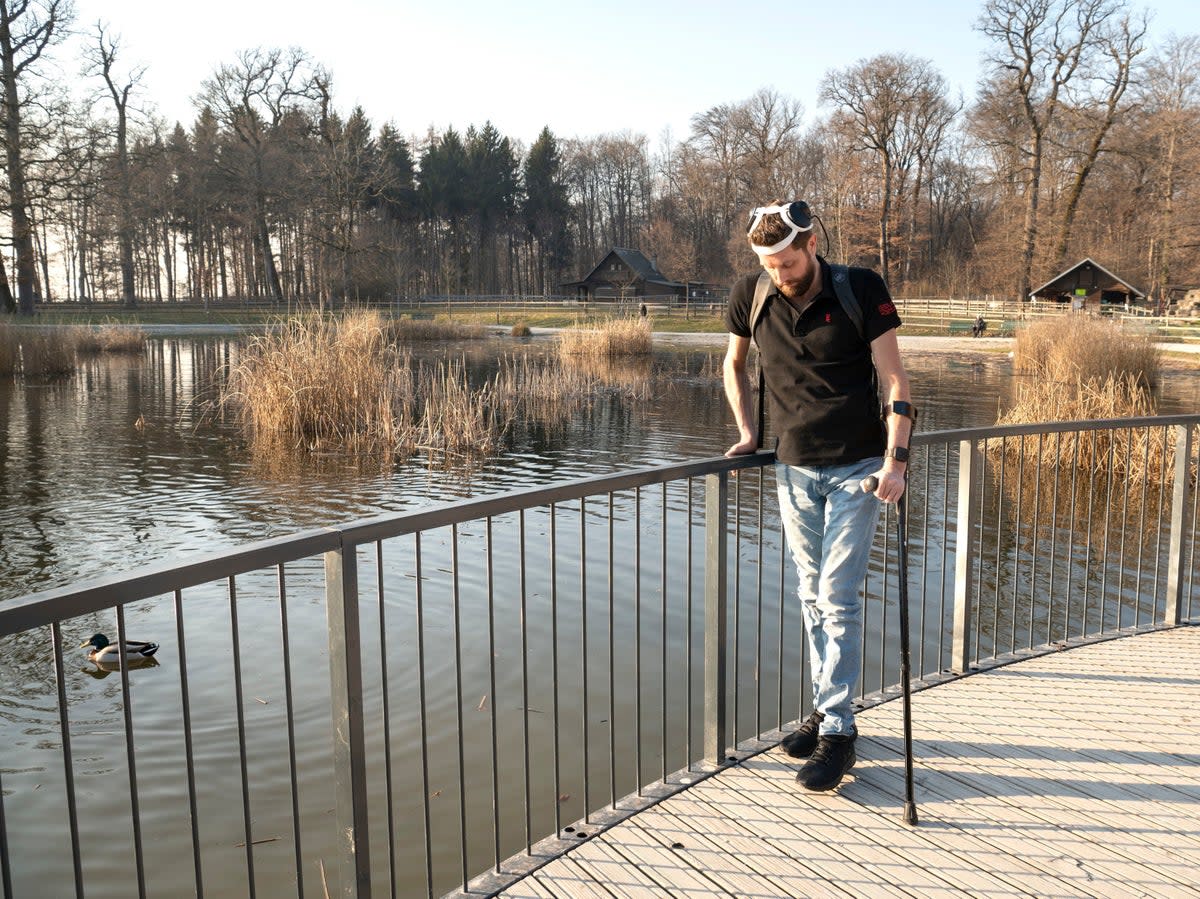Groundbreaking implants allow paralysed man to walk again in historic first

A paralyzed man has become the first in history to regain his natural mobility through the use of implants, according to a new study.
Gert-Jan Oskam was paralyzed in 2011 after a motorcycle accident in China. He lost control of his limbs from his hips down, but — thanks to a newly-developed device linking his thoughts to his spinal cord — he can walk once again.
A study outlining the new tech was published in the journal Nature. The Swiss researchers who developed the tech describe it as a "digital bridge" between the patient's brain and spinal cord, bypassing the injured areas of his body.
Mr Oskam has been walking with the implants for more than a year, with no sign of the connection breaking down, according to the New York Times.
“For 12 years I’ve been trying to get back my feet,” Mr Oskam said Tuesday in a press briefing. “Now I have learned how to walk normal, natural.”
Not only is Mr Oskam walking again, but he is showing signs of actual neurological recovery thanks to the implants — even if the implant is deactivated, Mr Oskam can still walk using crutches.
When a person suffers a traumatic spinal cord injury, it can sever the communication between the brain and the region of the spine that controls walking, rendering a person paralyzed.
The new implants re-establish that connection by bypassing trouble spots.
Grégoire Courtine, who helped lead the implant research and who serves as a spinal cord specialist at the Swiss Federal Institute of Technology, Lausanne, said the implants have "captured the thoughts of Gert-Jan, and translated these thoughts into a stimulation of the spinal cord to re-establish voluntary movement."
If that sounds like fanciful speculative fiction, the neuroscientist who placed Mr Oskam's implants would have agreed — until she saw the results.
"It was quite science fiction in the beginning for me, but it became true today," Jocelyne Bloch, the University of Lausanne neuroscientist who placed the implant, said.


